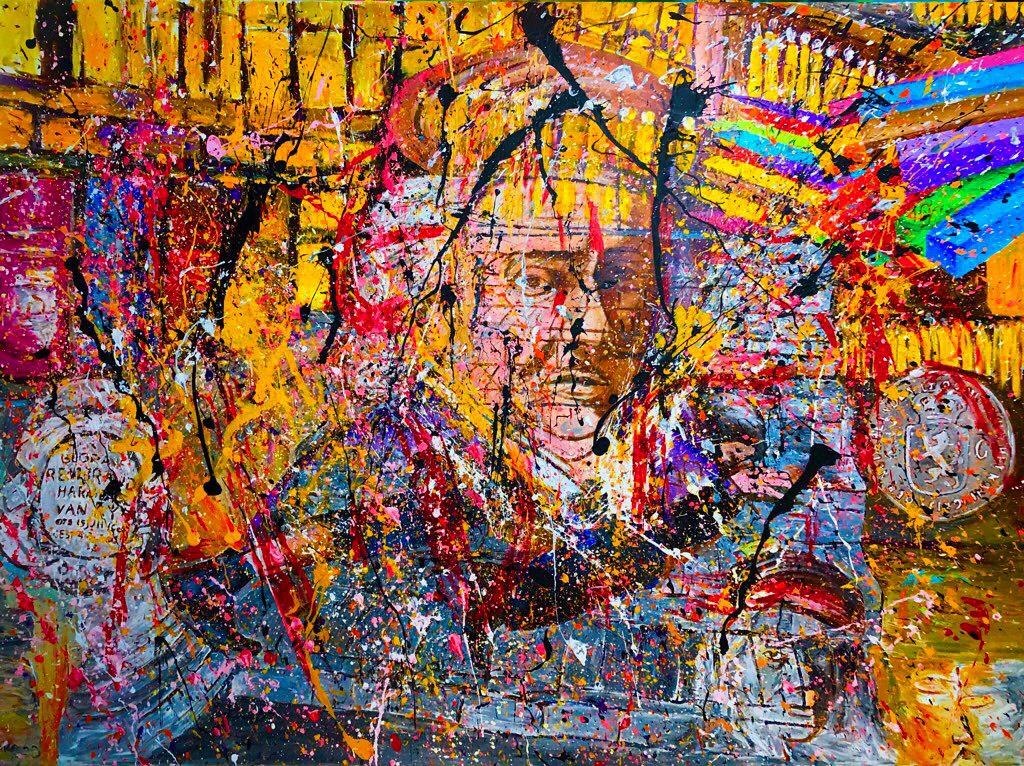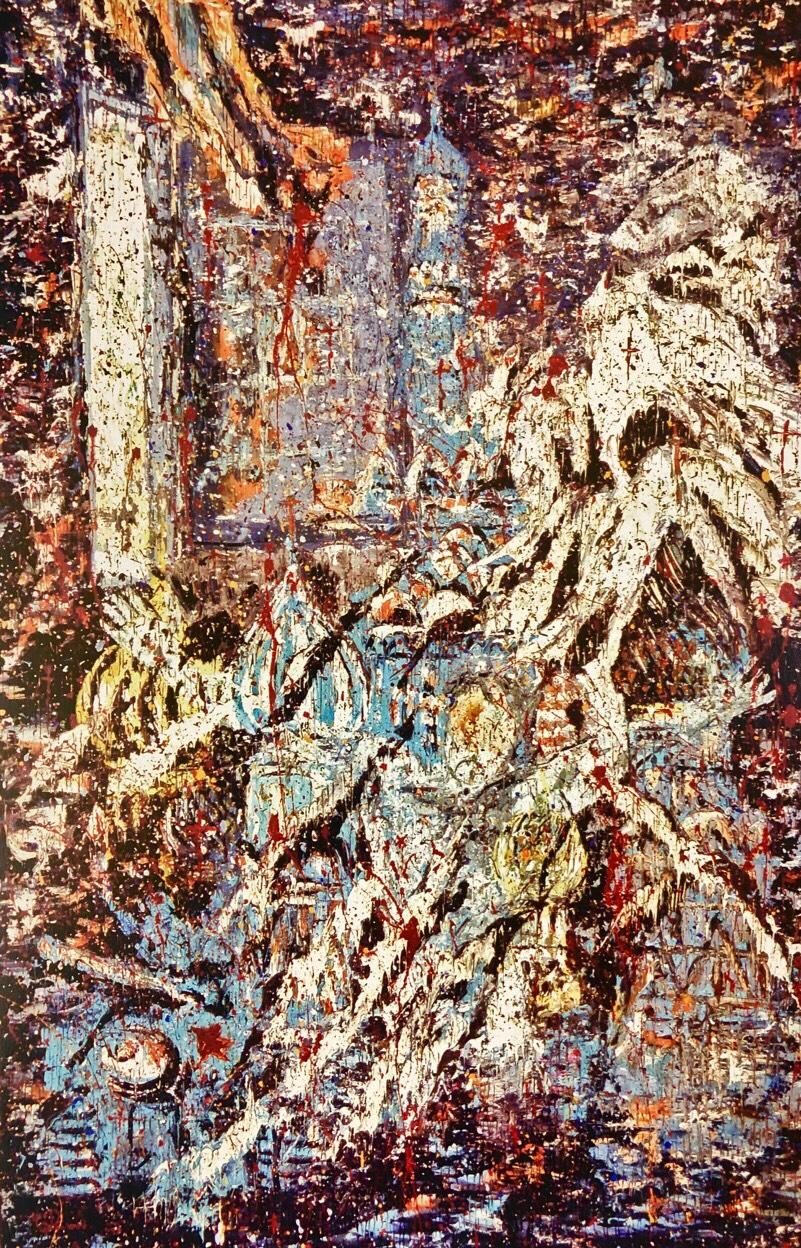KC: How did you develop your interest in graffiti art in Iran?
DR: I only really used graffiti art for a short period of time to express my resentments towards the regime in Iran. I chose it because it was visible to thousands and I felt like I could make a difference more easily that way. However, it came to an end with my imprisonment in 1981, and I haven’t engaged in graffiti art since.
KC: You settled in Germany after leaving Iran. What was that change like and how did it impact your work?
DR: The biggest initial impact was having the complete freedom for the first time to express myself how I wanted to. Then, of course, I got to visit some of the greatest museums in the world in Europe and study the works close-up. Being around other great artists and thinkers also left its own positive impacts on my work. In particular, meeting the renowned German art historian and critic, Hanns Theodore Flemming in 1986 had an extraordinary impact on my work. Flemming was incredibly knowledgeable. He spent a great deal of time with many important artists of the twentieth century such as Picasso, Matisse, Chagall, Nolde, and Dali; and had talks with Max Ernst, Marcel Duchamp, Otto Dix, Eduard Bargheer, David Hockney, Andy Warhol and many more... He wrote about their works extensively and spent a great deal of time meeting with them in person at their studios to study their works. As a result, he had a very good, in-depth understanding of the progression of contemporary art, which I was able to benefit from.
I spent nearly twenty years meeting with Flemming on almost a weekly basis and he became one of my main early biographers who extensively wrote about my work. He was one of the first people who really appreciated Cryptorealism; and in many ways, I think he fell in love with it, dedicating the last twenty years of his life to writing about it–which I am enormously grateful for. I learned so much from being in his presence regularly.
It was also in Germany that I decided to cast aside the paintbrush and paint with my bare fingers. I felt like I could connect more viscerally with my body of work and fully express myself this way. And I have not picked up a paintbrush since 1986 in executing my oil and acrylic paintings.






































